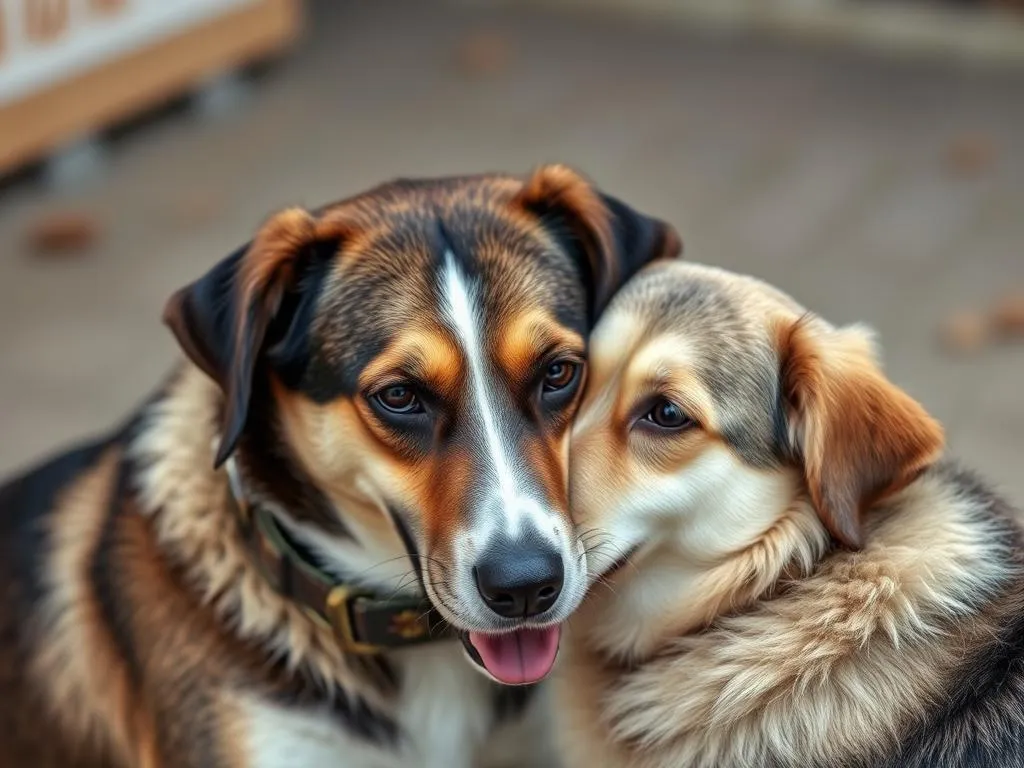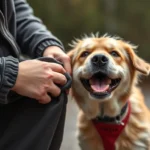
Understanding dog behavior is crucial in enhancing the bond between you and your canine companion. One of the most significant aspects of this bond is affection. How do dogs show affection? This question is vital for any dog owner, as recognizing and responding to affectionate behaviors can lead to a more harmonious relationship and effective training.
Understanding Dog Affection
Definition of Affection in Dogs
Affection in dogs refers to the emotional connection that they share with humans and other animals. This connection is demonstrated through various behaviors that signal love, trust, and attachment. Dogs are capable of emotional intelligence, meaning they can understand and respond to human emotions. This ability allows them to express affection in ways that are meaningful to their human companions.
Evolution of Dog Affection
The relationship between dogs and humans has evolved over thousands of years. Initially, dogs were domesticated for their utility—hunting, herding, and guarding. Over time, as dogs became more integrated into family life, their behaviors adapted. Affectionate behaviors such as cuddling and seeking human attention became more pronounced, strengthening the bond between species. This evolution underscores the importance of understanding how do dogs show affection as a key component of effective dog training.
Signs of Affection
Physical Signs
Tail Wagging
One of the most recognizable signs of affection in dogs is tail wagging. Not all wags are created equal, though. A broad, sweeping wag with an open posture often indicates happiness and affection, while a stiff wag might indicate agitation. Observing the context and body language of your dog can help you interpret the meaning behind their wagging tail.
Licking
Dogs often lick their owners, which can be a sign of affection. This behavior is akin to a human kiss and shows love and bonding. Licking releases endorphins in dogs, making them feel good and reinforcing their desire to connect with you.
Cuddling and Leaning
When your dog curls up next to you or leans against you, they are expressing affection. This physical closeness is vital for dogs as it mimics the warmth and safety they would feel in a pack. It’s a sign that they trust you and consider you part of their family.
Behavioral Signs
Following You Around
If your dog seems to shadow you constantly, it’s a clear indicator of their affection. Dogs are social animals, and their desire to stay close to you demonstrates their attachment and trust. This behavior can also indicate that they feel secure in your presence.
Bringing You Toys
When dogs bring you their favorite toys, they are not just looking for playtime; they are sharing something they love with you. This action signifies trust and affection. It’s akin to a child wanting to share their favorite possessions with a parent.
Eye Contact
Soft eye contact is a profound sign of affection in dogs. When a dog looks at you with relaxed eyes, it indicates a bond and trust. This behavior can evoke feelings of love and connection, and it’s often reciprocated by humans looking back at their dogs.
Vocal Signs
Barking and Whining
Barking is a common way for dogs to communicate, and its meaning can vary. A joyful bark upon your arrival home can indicate excitement and affection. Whining, especially when directed at you, can also be a plea for attention or a sign of affection.
Growling
While growling is often associated with aggression, it can also indicate playfulness in certain contexts. If your dog growls while playing, it may be expressing excitement and affection. Understanding the context is essential to interpreting this vocalization correctly.
Implications for Training
Building Trust Through Affection
Understanding how do dogs show affection can significantly enhance trust between you and your dog. When dogs feel loved and secure, they are more likely to be receptive to training. Positive reinforcement, including affection, can foster a trusting environment where your dog feels safe to learn.
Using Affection as a Training Tool
Rewarding Good Behavior with Affection
Incorporating affection into your training sessions can be a powerful motivator. When your dog exhibits desired behaviors, rewarding them with praise, pets, or cuddles reinforces their actions. This method creates a positive association with training, making your dog more eager to learn.
Recognizing When Affection is Misinterpreted
Sometimes, dogs may misinterpret affection, leading to confusion. For instance, if a dog is anxious or fearful, they might not respond positively to physical affection. Being aware of your dog’s body language is crucial to ensure that your affectionate gestures are welcome and effective.
Building a Stronger Bond
Showing affection can significantly improve the relationship between you and your dog. A strong bond built on love and trust fosters a cooperative atmosphere that enhances training outcomes. When your dog feels emotionally secure, they are more likely to engage positively during training sessions.
Tips for Enhancing Affection Between You and Your Dog
Daily Rituals to Show Affection
Creating daily rituals can help reinforce your bond. Simple acts like morning cuddles, evening walks, or playtime can make a significant difference in your relationship. Establishing a routine not only promotes affection but also builds trust over time.
Effective Communication
Understanding your dog’s body language is crucial. Dogs communicate through subtle cues, and responding appropriately can enhance your connection. For example, if your dog approaches you with soft eyes and a wagging tail, this is a cue for affection that should be reciprocated.
Training Sessions as Bonding Opportunities
Training doesn’t have to be a chore; it can be an opportunity for bonding. Incorporating affection into training routines, such as using treats and praise, can make sessions enjoyable for your dog. Fun activities like agility courses or interactive games can further strengthen your bond while training.
Common Myths About Dog Affection
Dogs Only Show Affection for Food
One prevalent myth is that dogs show affection solely because of food. While treats can motivate dogs, they also express affection in various ways unrelated to food. For instance, a dog’s desire to cuddle or play reflects their emotional connection to you, not just a hunger for treats.
Affection is a Sign of Dependency
Many people believe that a dog’s affection indicates dependency. However, affection is a natural part of a healthy relationship. Dogs thrive on companionship, and their affectionate behavior showcases their love and trust, not merely reliance on their owners.
All Dogs Show Affection the Same Way
Just like humans, dogs have unique personalities and ways of expressing affection. Some breeds may be more physically affectionate, while others may prefer to show their love through play or proximity. Understanding your dog’s individual personality can help you interpret their affectionate behaviors more accurately.
Conclusion
Recognizing how do dogs show affection is essential for building a strong bond between you and your dog. Understanding the signs of affection, such as physical, behavioral, and vocal cues, allows you to respond appropriately and enhance your training methods.
Observing your dog’s behaviors can provide insights into their emotional state and strengthen your relationship. By appreciating and reciprocating their affection, you can foster a loving environment that promotes trust and cooperation in your training efforts.
Take the time to connect with your dog, and you’ll find that the rewards of a loving bond extend far beyond mere companionship.









